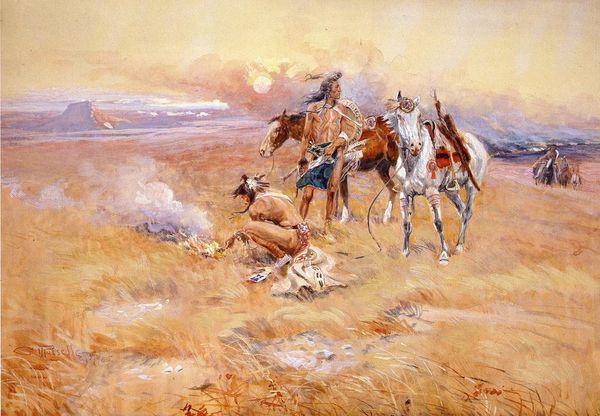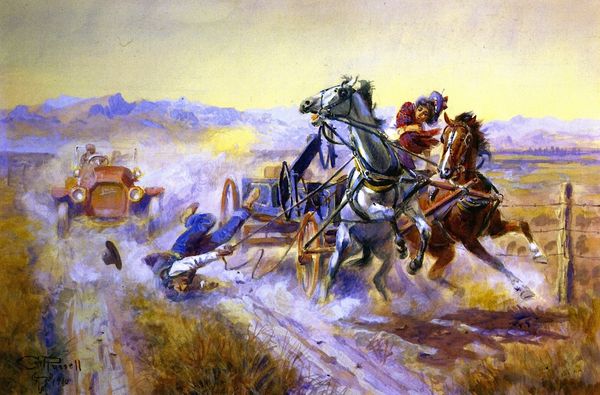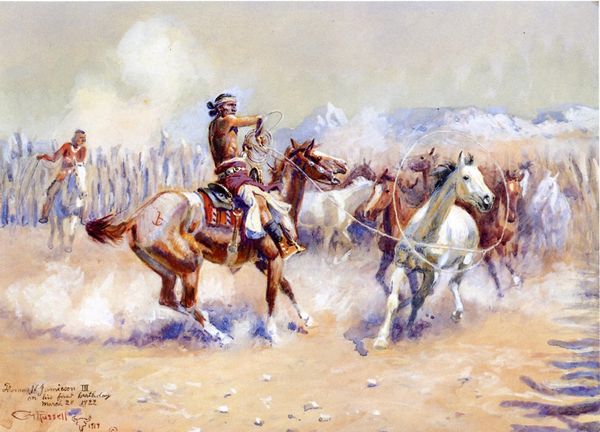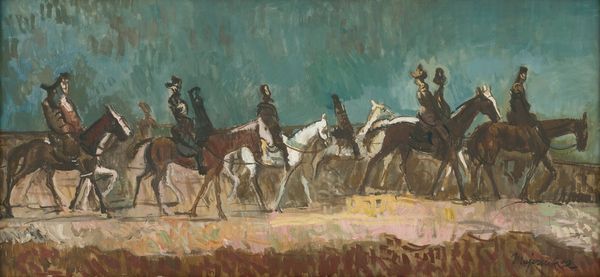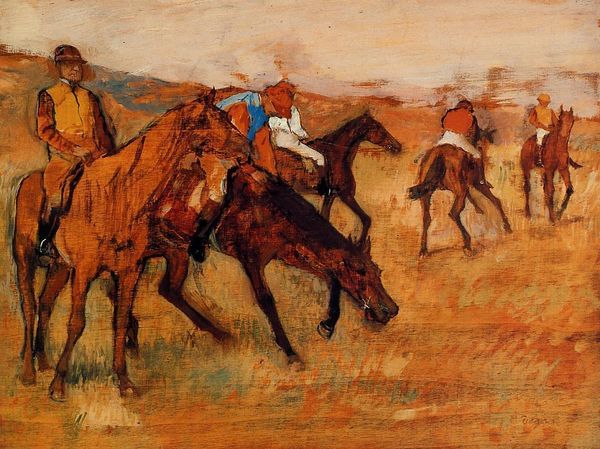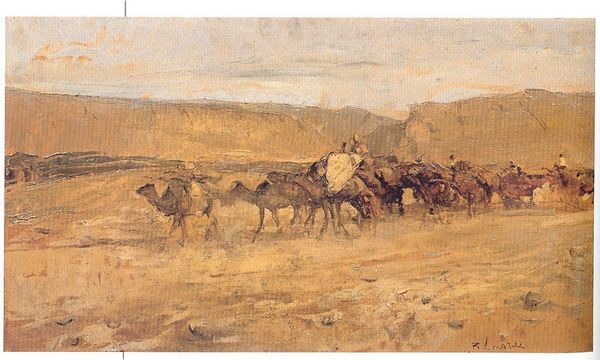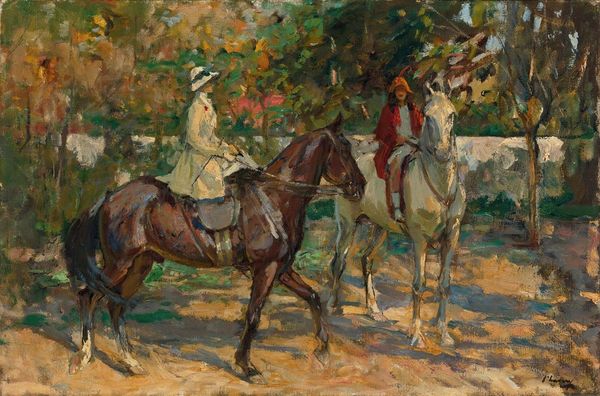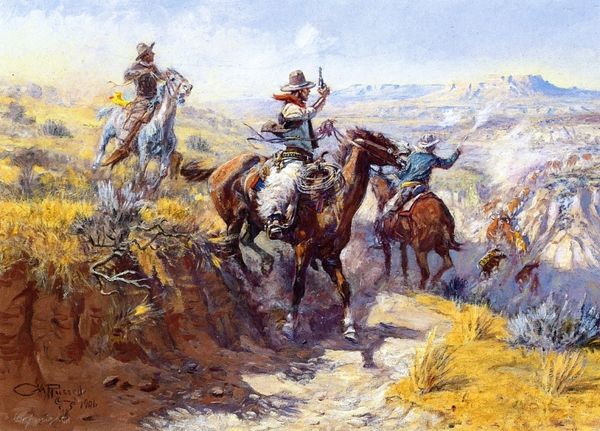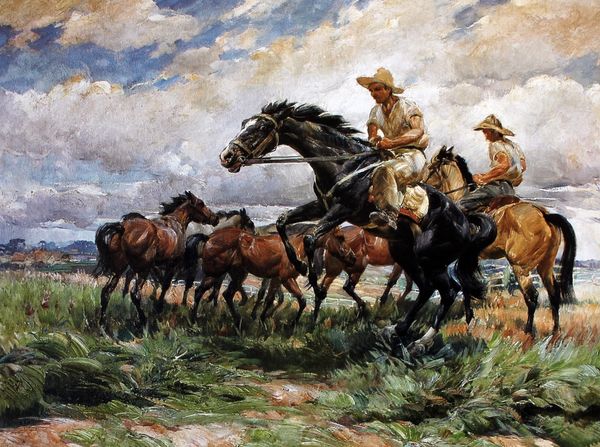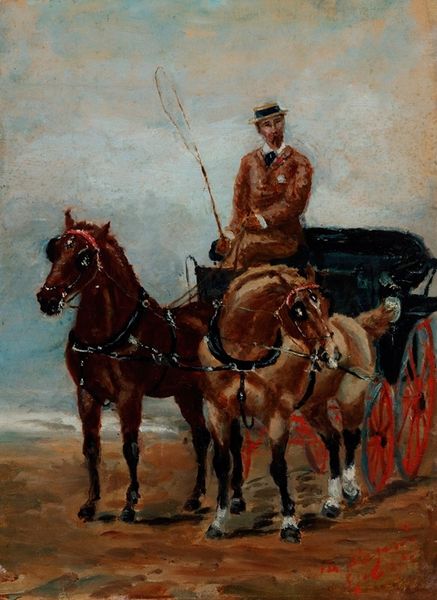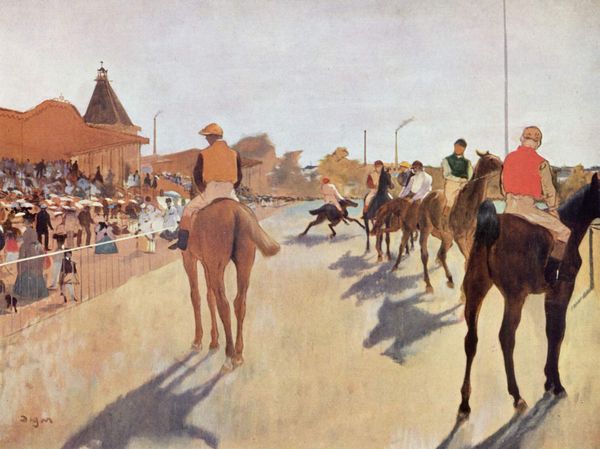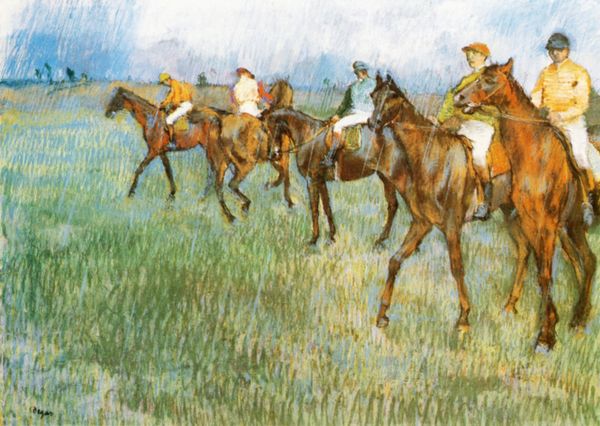
Copyright: Public domain
Curator: We're looking at Isaac Israels's 1928 painting, "The Hunt's Return." A Dutch scene, quite animated. Editor: My initial thought is how wonderfully tactile it feels, even from here. The thick impasto of the oil paint makes me want to reach out and touch the canvas, especially to feel the texture of those horse’s manes. Curator: It captures a specific cultural moment. Israels was known for depicting scenes of everyday life, particularly leisure activities of the wealthy. Here we see figures on horseback, returning perhaps from a fox hunt, a pastime heavily associated with the upper classes. Editor: Absolutely, and considering the date, 1928, the materiality also speaks volumes about consumption and class. These are luxury items: the horses, the riding outfits, the leisure time itself. This isn't just paint on canvas, it's a visual record of material privilege. How did Israels, himself, view these scenes of wealth? Curator: That's always the central question, isn't it? He straddled a line. He clearly had access to these circles, depicting them with a certain insider's familiarity. Yet, his style – rooted in Impressionism and later Post-Impressionism – lent itself to a certain detachment, an almost journalistic observation of social rituals. Was he celebrating or simply recording? His urban subjects often showed working-class people. Editor: Right, I wonder how his exploration of material depiction changed whether he was portraying the working class or the elites. I’m also intrigued by the open space of the scene: what meaning is there in the flat application of color there, which is still so very intentional? Curator: Good point! The flatness contributes to a sense of modernity, breaking from academic traditions of illusionism. The scene becomes less about the "hunt" itself and more about a display of social standing. The lack of a clear narrative emphasizes the performative aspects of the whole ritual. Editor: Well, seeing the work from this point of view truly gives a rich impression about materiality, both in Israels' time and how his paintings engage our view and consumption habits today. Curator: Indeed, thinking about how “The Hunt’s Return” illustrates a key period and tells an important narrative shows us just how art and culture intertwine to depict how things were.
Comments
No comments
Be the first to comment and join the conversation on the ultimate creative platform.
